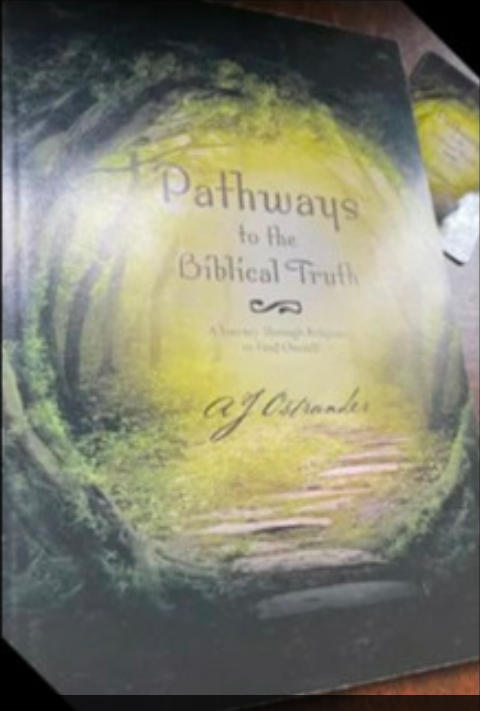Ten generations after Noah, Abraham was born to his father Terach in Mesopotamia. Terach was an idolater who lived in a kingdom ruled by King Nimrod. At three years of age, Abraham instinctively felt that it was illogical to worship statues of wood and stone. His mind began to wonder and explore, and over the course of time he ultimately became convinced of the notion of monotheism, one G‑d, a Superbeing who is omnipotent.
From the very beginning, Abraham struggled against the prevalent current—an attribute inherited by his descendants.
He was dubbed the Ivri (lit. “the other side”), for the whole world was on one side and he was on the other. Nimrod cast him into a fiery furnace for his “heretical” beliefs, yet he miraculously emerged unscathed, and began proclaiming his beliefs in public. Abraham was a great philosopher and astrologer. The Talmud teaches that, “Abraham held great astrology in his heart, and all the kings of the east and west arose early at his door.” He moved to Haran where at the age of seventy five, G‑d spoke to him in person for the first time and instructed him to leave his homeland and enter the Holy Land. When G‑d revealed Himself to Abraham, one of the first things that He told him was that his fate, and that of his descendants, transcended the influence of the constellations.
Therefore, Abraham should not be concerned with astrological predictions.
It is in the Holy Land where he met Malki Tzedek, King of Shalem, who was a priest to G‑d, the Most High (Genesis 14:18). Our Sages identify Malki Tzedek as Shem the son of Noah. There is evidence that the mystical tradition was taught to Abraham by Shem. According to some authorities Abraham authored Sefer Yetzirah (the Book of Formation), one of the fundamental works of Kabbalah.
The Talmud states that Abraham, Isaac, and Jacob all studied in the academies of Shem and Eber. The Talmud further proclaims that the Patriarchs kept the entire Torah before it was given. How was this possible? The Kabbalists explain that they kept the Torah in its spiritual form, for it was only subsequently through Moses that the Torah instruction became manifest in the physical observance of Mitzvot. The Patriarchs, however, were well aware of the spiritual flow affected by Mitzvah performance. The Zohar parallels the biblical episode of Jacob with the sticks, troughs, and striped sheep with the Mitzvah of putting on tefillin. Both elicited a similar Divine emanation, however after Sinai, it was the Divine will that this spiritual flow came to be through laying a physical pair of tefillin.
Abraham was also fully aware of the magical and idolatrous uses that could be developed from these mysteries, and the Talmud states that Abraham had a tract dealing with idolatry that consisted of 400 chapters. There is also a Talmudic teaching that Abraham taught the mysteries involving “unclean names” to the children of his concubines. This is based on the verse, “to the sons of the concubines that Abraham had, Abraham gave gifts, and he sent them away…to the lands of the East” (Genesis 25:6). These gifts consisted of occult mysteries, which then spread in eastern Asia. It is no wonder that in many of the eastern religions we find parallels to Kabbalistic teachings. One of the most simple and striking examples of the transmition of the occult is that every child knows a magician uses the phrase “Abracadabra.” This magical expression is none other than an Aramaic extension of the Hebrew abra— I will create, k’adabra—as I will speak—the knowledge of creation using letters and names as documented in Sefer Yetzirah.
Abraham nomadically wandered the length and breadth of the land proclaiming his belief, and he was so successful that he converted thousands to monotheism. His method was one of kindness—he set up a motel and after feeding and watering wayfarers they were introduced to the true belief and blessed G‑d the Provider. Abraham converted the men and Sarah the women, and together they successfully brought many souls under the wings of the Shechinah, hence resensitizing the world to G‑dliness.
This holy work was continued by Isaac, Abraham’s second son, who was born miraculously after Abraham’s circumcision, implying that his future progeny who would be circumcised would survive miraculously. Isaac displayed amazing restraint and self-sacrifice at the Akeidah (the binding of Isaac). These attributes are forever engraved into the Jewish soul. Jacob, Isaac’s son, studied in the academy of Shem and Eber for fourteen years before setting out on his perilous journey back to Mesopotamia to his uncle Laban. On this journey, while sleeping on what was to become the Temple Mount, he had the dream of the ladder and the angels– a dream full of Kabbalistic mysteries that will be explained in a further chapter. In exile he raises the twelve tribes and subsequently returns, only to be challenged further. Eventually, he descends to Egypt, where he establishes a house of study where he specifically instructs his son Levi in the tradition, and the tribe of Levi becomes the Israelite priests. It is here that the stage is set for Levi’s great-grandson Moses to redeem the Israelites from the Egyptian bondage.
Source: Abraham - Kabbalah, Chassidism and Jewish Mysticism (chabad.org)


No comments:
Post a Comment